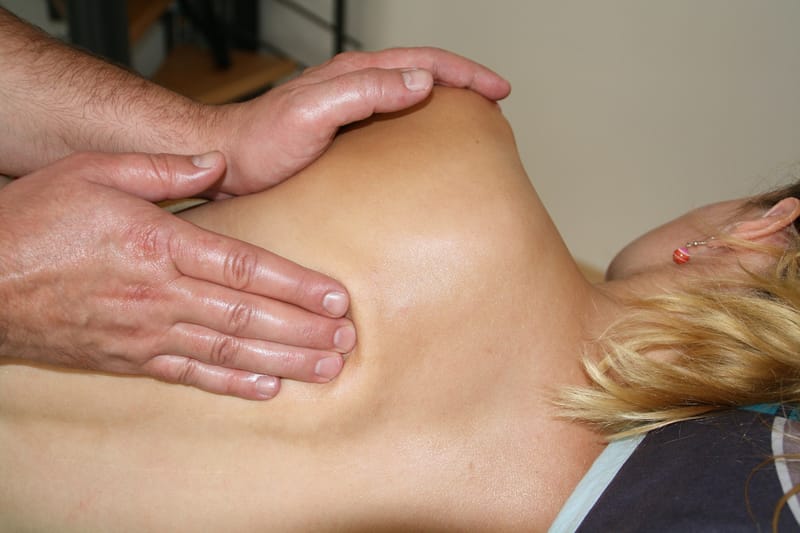LOW BACK & NECK PAIN

At The Bridgeman Centre the majority of patients we see suffer with lower back pain and neck problems, we can offer pain relief in various forms of treatment. Lower back pain and back pain is the most common cause of sickness in the workplace in the UK with up to 80% of the UK population experiencing back pain at some point in their lifetime. It affects approximately one third of the adult population each year with 20% of people consulting their GP. Neck pain is also extremely common and can have a negative impact on an individual’s daily life.
There are a number of different guidelines for both low back pain and neck pain, with those proposed by the National Institute for Health and Care Excellence (NICE) being most commonly used in the UK. These provide clinical guidance regarding the most appropriate treatment methods and assessment tools. At The Bridgeman Centre we follow such guidelines in order to provide evidence based treatments for back and neck pain and can treat back pain in our clinic in Wigan.
What is the main cause of neck and low back pain?
The actual causes of neck / back pain can be attributed to multiple factors. Only 15% of cases are thought to have an identifiable cause, with the remains 85% of cases classed as non-specific.
Both neck and low back pain can be caused by muscle weakness, poor posture, muscle imbalance, damage to the vertebrae or intervertebral discs, repetitive movements, or medical conditions such as scoliosis or genetic causes.
An increase in sedentary lifestyles and static working conditions is thought by many to have increased the prevalence of neck and low back pain. This is often related poor posture and ergonomics whilst at the work station, which increases the risk of muscle imbalances developing, causing over activity/weakness and compensations in different muscle groups.
Low back and neck pain can also become evident when playing sport, usually as a result of a twisting or bending movement at the spine whilst the spine is loaded. A thorough assessment will highlight any need for further investigations. If this is found to be the case your physio will refer the patient back to their GP for an X-Ray or for a consultant referral for further scans/ tests.
WHIPLASH & ASSOCIATED DISORDER
Due to the mechanism of road traffic accidents, some people develop what is known as a ‘Whiplash Associated Disorder’. Whiplash associated disorders involve a sudden change in movement in the cervical spine, causing excessive extension and flexion, injuring the facet joints and ligaments at the spine.
Symptoms can typically persist for longer than 6 months, however it is important to speak with a physiotherapist early for advice on how to treat the neck pain. If following the road traffic accident you suffer from prolonged dizziness, fainting or problems with your speech, swallow or vision, you need to speak to a doctor as soon as possible.
How can Physiotherapy help my neck and back pain?
Physiotherapy is extremely beneficial for neck and low back pain with a large amount of research available which supports its effectiveness as a treatment method. There are a number of different treatment methods which can be used for low back pain which will depend on its presentation and severity.
Treatment methods include soft tissue massage, acupuncture, exercise prescription, joint mobilisations, joint manipulations, stretching and trigger point release therapy, myofascial release, muscle imbalance exercises. The physiotherapist’s at The Bridgeman Centre use an evidence based approach and the above treatment methods have recommended in the NICE Guidelines for low back pain.
As well as providing treatment, the physiotherapist will be able to advise you as to any work station adjustments of aids that may assist your work day.
Red Flags
Red Flags is a term used by health care professionals to highlight signs and symptoms of a serious underlying pathology. If the individual is suffering with back pain and they experience any changes in their bladder or bowel symptoms, radiating pins and needles or numbness down their legs to the toes, or numbness around the groin region, they need to visit their local A+E department for an immediate MRI scan. If the individual is suffering with neck pain then they need to be aware of any dizziness, problems with swallowing or speaking, changes in their vision (double vision) and fainting episodes. If they do experience these symptoms then they need to seek urgent medical attention. Your physio will always be vigilant to the signs and symptoms that would require urgent attention.
If you would like to discuss your problem before booking an appointment please give our physiotherapy team a call, we will do our best to help. 01942 321235


